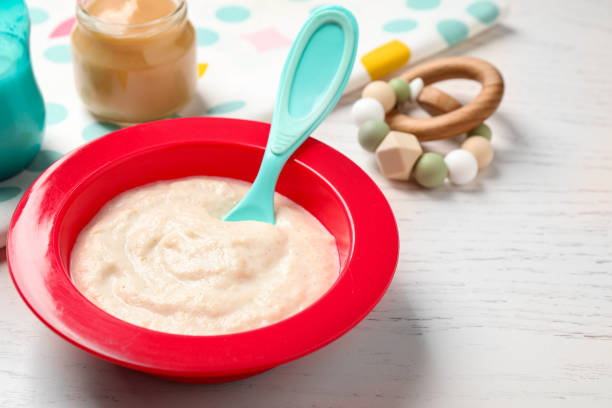The transition from milk to solid foods is a significant milestone in your baby’s first year. It's an exciting time, but it can also be filled with uncertainty and questions. Here’s a comprehensive guide with tips and cautions to ensure a smooth and enjoyable introduction to solid foods.
When to Start
The World Health Organization (WHO) and the American Academy of Pediatrics (AAP) recommend starting solids around six months of age. At this point, most babies have the physical development needed to handle solid foods, such as sitting up with minimal support and showing interest in what others are eating.
Signs Your Baby is Ready
- Head Control: Your baby should be able to hold their head up steadily.
- Sitting Up: They should sit with little or no support.
- Mouthing Movements: Look for your baby’s ability to move food to the back of their mouth and swallow.
- Interest in Food: If your baby watches you eat, reaches for your food, or opens their mouth when food approaches, they’re showing readiness.
What to Start With
First Foods: Single-grain cereals like rice or oat cereal are common first foods. Pureed vegetables, fruits, and meats are also good options. Start with simple, single-ingredient foods to monitor for any allergies or adverse reactions.

How to Introduce Solids
- Consistency and Texture: Begin with pureed or mashed foods before progressing to small, soft chunks as your baby masters eating.

- Quantity: Start with a teaspoon or two. Remember, in the beginning, it’s about getting used to the texture and taste rather than providing nutrition.

- Frequency: Introduce solids once a day, gradually increasing to two or three times daily as your baby becomes more comfortable.

Tips for a Successful Introduction
- Be Patient: Some babies take to solids quickly, while others need more time. Don’t rush the process.

- Use a Spoon: Feed your baby with a small, soft-tipped spoon. Let them get used to the idea of eating from a spoon rather than a bottle or breast.

- Include Iron-rich Foods: Around six months, babies’ iron stores begin to deplete. Foods like pureed meats, beans, and fortified cereals can help maintain healthy iron levels.

- Variety: Introduce a variety of foods to ensure a balanced diet and help your baby develop a range of tastes and preferences.

Cautions to Keep in Mind
- Choking Hazards: Avoid foods that are hard, small, and round. Nuts, whole grapes, and chunks of meat or cheese can pose a choking risk.
- Allergens: Common allergens include cow’s milk, eggs, peanuts, tree nuts, fish, shellfish, soy, and wheat. Introduce these foods one at a time and watch for any reactions.
- Honey: Do not give honey to babies under one year old due to the risk of botulism.
- Salt and Sugar: Avoid adding salt or sugar to your baby’s food. Their kidneys can’t handle too much salt, and added sugars can lead to a preference for sweets.
Common Concerns
- Refusal of Solids: It’s normal for babies to reject food initially. Keep offering different foods without pressuring them.
- Food Allergies: Introduce new foods individually and watch for reactions such as rashes, vomiting, or diarrhea. Consult your pediatrician if you suspect an allergy.
- Constipation: Solid foods can change your baby’s stool patterns. Ensure they are getting enough fluids and fiber-rich foods like pureed fruits and vegetables.
Creating a Positive Mealtime Environment
- Routine: Establish regular mealtimes to create a sense of security and predictability.
- Family Meals: Whenever possible, eat together as a family. Babies learn by watching and imitating.
- Minimize Distractions: Turn off the TV and focus on eating. This helps your baby concentrate on the meal and the experience of eating.
